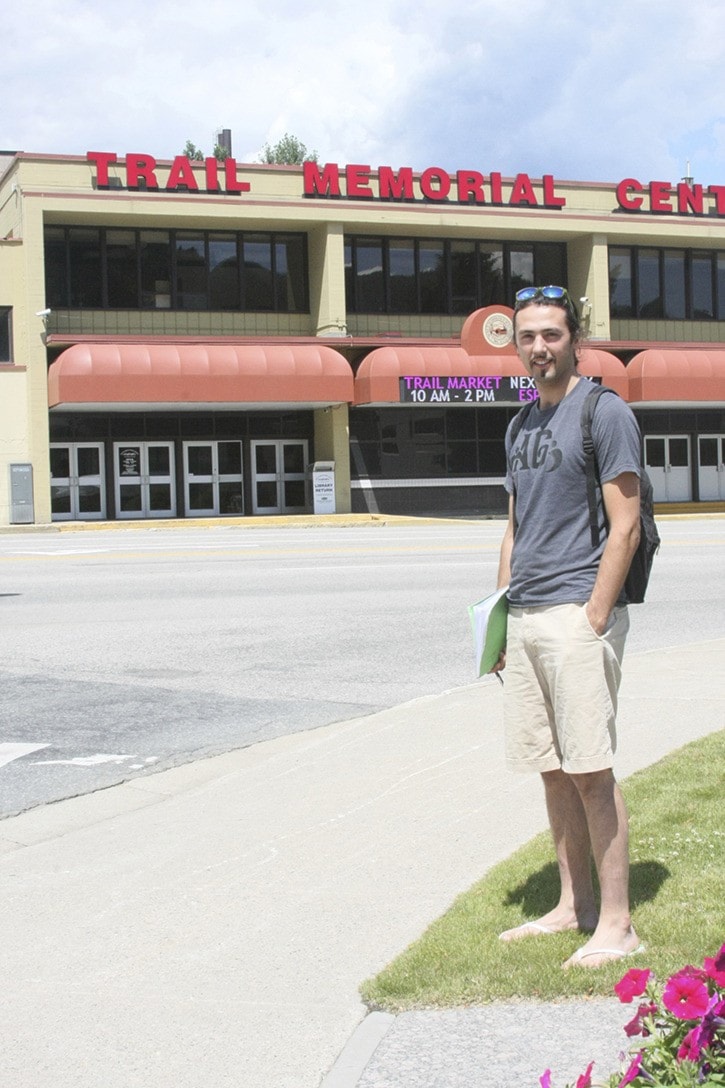The City of Trail’s struggle to regenerate is fascinating to architect student Austin Hawkins and the reason he chose it as the subject of his master architecture thesis.
Time and again he has been asked, why chose Trail?
“I think the question of “why do you study our city” is indicative of Trail’s trouble with revitalization,” he said.
Hawkins said that Trail has identified itself as having an image problem, but in his eyes, nothing could be further from the truth.
“I don’t study Trail because it is a dirty place,” he said. “It is a beautiful place with an energetic and majestic industry, a ‘castle on the hill’ marking powerful potential.”
Hawkins, a third-year University of British Columbia student, has travelled Europe, North and South America, Africa and Asia, and said that the most interesting of conditions occurring in society are “right here in Trail.”
The crux of his study is the interaction of a global enterprise (Teck) with local culture.
Because the most appropriate use of land can only be known by people who live on it, Trail is a perfect example of a place whose local characteristics intertwine with industry on a global scale, he said.
To study the challenges of Trail’s downtown revitalization efforts, Hawkins compiled a vast amount of data, including topography, building plans and photographic documents, to understand the changing conditions in the downtown core.
“The Teck takeover in 2001 was a huge shift and saw decision making move to a global metropolis,” he said. “As a result Trail has become a peripheral city of the industry whereas before it was central.”
Hawkins has completed the research phase of his year-long project and has identified several components to re-design. However, his vision of downtown Trail’s possibilities continue to evolve.
When Hawkins travelled to Trail in February and met with Mayor Dieter Bogs and the Downtown Opportunities and Action Committee to discuss the downtown plan, he was on board with the idea of moving and expanding the library and museum to the empty Eagles lot on the south end of town.
He has since revisited that possibility and shifted his ideas.
“Trail has such a long rich history that is unprecedented from other towns in B.C.” he said.
“I think the museum should be an integral part of the Victoria Street development,” he said.
“The only old building left on that street is the Union Hotel, and in my opinion, that’s an opportunity to keep Trail’s history in the centre of town.”
Additionally, Hawkins has focused on how Trail’s improved air quality and reduction in sulphur dioxide (SO2) emissions can spark revitalization in relation to architecture.
Original building facades were designed to keep out SO2 emissions, and now with better air quality, those walls can be opened up.
Hawkins noted that the city could lead the charge and renovate the Trail Memorial Centre by breaking through its concrete exterior wall facing Victoria Street.
“Things have changed,” he said. “With improved air quality further facades can be opened up allowing downtown stores to spill out onto the streets and create better synergy between the businesses.”
Next semester Hawkins will be delving into design work and creating images and models for a presentation of his ideas to the city.
“I think the more people who know about what I have discovered brings great possibilities to the city,” he said. “After all, a city’s future depends most upon its attitude.”
